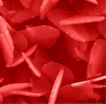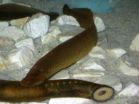(Press-News.org) Tampa, Fla. (October 18, 2010) –Two research teams from the Okayama University Graduate School of Medicine (Okayama, Japan) have reported breakthrough studies in liver cell transplantation. One team found that the technical breakthrough in creating induced pluripotent stem cells (iPS) from mouse somatic cells (nonsex cells) in vitro had "implications for overcoming immunological rejection." Whereas a second team using liver cell xenotransplantation - transplanting cells of one species into another (in this case transplanting pig liver cells into mice) - found that transplanted liver cells from widely divergent species can function to correct acute liver failure and prolong survival.
Their studies, published in the current issue of Cell Transplantation (19:6/7), are freely available on-line at http://www.ingentaconnect.com/content/cog/ct/
Somatic cells differentiate into hepatocyte-like cells
A research team at the Okayama University Graduate School of Medicine, working with colleagues at the University of Pittsburgh School of Medicine found that mouse induced pluripotent stem (iPS) cells are pluripotent (able to differentiate into many varieties of stem cells) and able to proliferate in vitro without limits and could be cultured to become hepatocyte-like cells.
According to the researchers, a major limitation for cell-based therapies to treat liver diseases is the shortage of cell donors. Rejection is still an issue and chronic immunosuppression is required for allotransplantation (cells from nonidentical donors), making patient-derived cells, especially somatic cells (non-sex cells) attractive for transplantation.
"The ability to make iPS cells from somatic cells has implications for overcoming both immunological rejection and ethical issues associated with embryonic stem cells," said corresponding author Dr. Masaya Iwamuro. "Our study will be an important step in generating hepatocytes from human iPS cells as a new source for liver-targeted cell therapies."
The researchers found that the transplanted hepatocyte-like cells they produced from the mouse iPS cells increased the production of albumin and were also able to metabolize ammonia, which are characteristics of functional hepatocytes.
"In the future, studies will generate new therapies that include the transplantation of iPS cell-derived hepatocytes without immunological barrier, in vitro determination of toxicity, and the development of personalized health care by evaluating drugs for efficacy and toxicity on patient-specific hepatocytes," concluded Dr. Iwamuro.
###
Contact: Dr. Masaya Iwamuro, Department of Gastroenterology and hepatology, Okayama University Graduate School of Medicine, Dentistry and Pharmaceutical Sciences 2-5-1 Shikata-cho, Kita-Ku, Okayama 700-8558, Japan.
Tel: +(81) 86-235-7219 Fax + 81 86-225-5991
Email iwamoruroasaya@yahoo.co.jp
Xenotransplantation for treating acute liver failure
In another related study, lead author Dr. Naoya Kobayashi, argued that a scarcity of human livers for transplantation and the greater supply of porcine liver cells (hepatocytes) suggest that once technical issues are overcome, porcine liver cells might be transplanted successfully into human livers. Their recent study successfully transplanted porcine hepatocytes into mice with acute liver failure.
"Using xenogenic hepatocytes from animals such as pigs might be advantageous for treating acute liver failure in humans," said Dr. Kobayashi. "Hepatocytes are the main active cells in the liver. However, removal from the liver causes hepatocytes major stress and potential loss of function. We tested a scaffold to improve the success of hepatocyte xenotransplantation."
According to Dr. Kobayashi, many scientists are making efforts to recreate a functional liver "outside its own niche," and their study involved creating a self-assembling peptide nanofiber (SAPNF) scaffold and testing its ability to function in vivo.
"In this xenotransplantation model, we found that the SAPNF has an excellent ability to promote hepatocyte engraftment and maintains tremendous hepatocyte functions capable of rescuing mice from acute liver failure," concluded Dr. Kobayashi, whose team worked with colleagues from the Baylor (Texas) University Institution for Immunology Research.
Contact: Dr. Naoya Kobayashi, Department of Surgery
Medical Research, Okayama University Graduate School of Medicine and Dentistry, 2-5-1 Shikata, Okayama, 700-8558, Japan.
Tel: +81 86-235-7255, Fax + 81 86-235-7485
Email immortal@md.okayama-u.ac.jp
"These studies highlight the progress of Japanese research with respect to cell transplantation for liver disorders," said Dr. Paul Sanberg, coeditor-in-chief of the journal Cell Transplantation and director of the University of South Florida's Center of Excellence for Aging and Brain Repair.
INFORMATION:
The editorial offices for CELL TRANSPLANTATION are at the Center of Excellence for Aging and Brain Repair, College of Medicine, the University of South Florida and the Diabetes Research Institute, University of Miami Miller School of Medicine. Contact, David Eve, PhD. at celltransplantation@gmail.com or Camillo Ricordi, MD at ricordi@miami.edu
END
MAYWOOD, Ill. -- Vitamin D deficiency is associated with a significant increase in lung transplant rejection, according to research conducted at Loyola University Health System (LUHS). These data were presented Monday at The American Society for Bone and Mineral Research 2010 annual meeting in Toronto, Ontario.
"Vitamin D deficiency is prevalent among lung transplant recipients," said Pauline Camacho, MD, study investigator and director of the Loyola University Osteoporosis and Metabolic Bone Disease Center. "This study shed greater light on the serious impact that this ...
The next time you feel your willpower slipping as you pass that mouth-watering dessert case, tighten your muscles. A new study in the Journal of Consumer Research says firming muscles can shore up self-control.
Authors Iris W. Hung (National University of Singapore) and Aparna A. Labroo (University of Chicago) put study participants through a range of self-control dilemmas that involved accepting immediate pain for long-term gain. In one study, participants submerged their hands in an ice bucket to demonstrate pain resistance. In another, participants consumed a healthy ...
Argonne, ILL—For the first time scientists have been able to watch nanoparticles grow from the earliest stages of their formation. Nanoparticles are the foundation of nanotechnology and their performance depends on their structure, composition, and size. Researchers will now be able to develop ways to control conditions under which they are grown. The breakthrough will affect a wide range of applications including solar-cell technology and chemical and biological sensors. The research is published in NANOLetters.
As coauthor Wenge Yang of the Carnegie Institution's ...
A new study in the Journal of Consumer Research found that ads featuring beauty products actually lower female consumers' self-esteem.
"One of the signature strengths of the advertising industry lies in its ability to transform seemingly mundane objects into highly desirable products," write authors Debra Trampe (University of Groningen, the Netherlands), Diederik A. Stapel (Tilburg University), and Frans W. Siero (University of Groningen). In an advertisement, a lipstick situated next to a stiletto heel represents glamour and a teddy bear in an ad for fabric softener ...
PHILADELPHIA - Taking a cue from the world of business-performance experts and baseball talent scouts, Penn Medicine translational medicine researchers are among the first to find a way to measure the productivity of collaborations in a young, emerging institute. They published their findings the most recent issue of Science Translational Medicine.
While metrics exist to measure the contributions of individual scientists, judging the effectiveness of team science has been more challenging. Reasoning that team science produces papers and grants, first author postdoctoral ...
People are willing to pay more for products that elicit their envy—but that's only when they are motivated by a positive, benign form of envy, according to a new study in the Journal of Consumer Research.
"Our studies showed that people who had been made envious of someone who owned an iPhone were willing to pay 80 Euros more on average," write authors Niels van de Ven, Marcel Zeelenberg, and Rik Pieters (Tilburg University).
The researchers made some important discoveries about the motivations that result from different kinds of envy. "Note that two types of envy exist: ...
The findings, published Oct. 19 in the Annals of Internal Medicine, showed the peer partner program resulted in lower glycated hemoglobin (HbA1c) levels after six months among men with uncontrolled diabetes.
The research was based on a peer partnership program established by the Veterans Affairs Ann Arbor Health System and the University of Michigan Medical School.
Each peer pair received initial brief training in peer communication skills and was expected to communicate by telephone at least once a week about their mutual efforts to improve diabetes control. Program ...
VIDEO:
The lamprey's body is gray, and the areas where muscle is active are shown with black lines. Note that the active muscle moves backwards slightly faster than the fish...
Click here for more information.
Scientists at the University of Maryland and Tulane University have developed a computational model of a swimming fish that is the first to address the interaction of both internal and external forces on locomotion. The interdisciplinary research team simulated how ...
How do people decide how much to spend on purchases for themselves versus others? A new study in the Journal of Consumer Research says it all depends on how powerful we feel at the moment of choice.
"We ask whether the powerful and powerless differentially value the self versus others, and whether this, in turn, translates into observable differences in their spending behavior," write authors Derek D. Rucker, David Dubois, and Adam D. Galinsky (Kellogg School at Northwestern University).
The authors conducted five experiments where they manipulated participants' states ...
If sleeping on a bed of ice or eating bacon-flavored ice cream doesn't sound too appealing, consider the tale you'll have to tell about it later. According to a new study in the Journal of Consumer Research, some people can't resist a chance to collect experiences.
"Recent marketing trends suggest that many consumers are attracted to unusual and novel consumption experiences and choose vacations, leisure activities, and celebrations that are predicted to be less pleasurable and enjoyable," write authors Anat Keinan (Harvard Business School) and Ran Kivetz (Columbia Business ...


